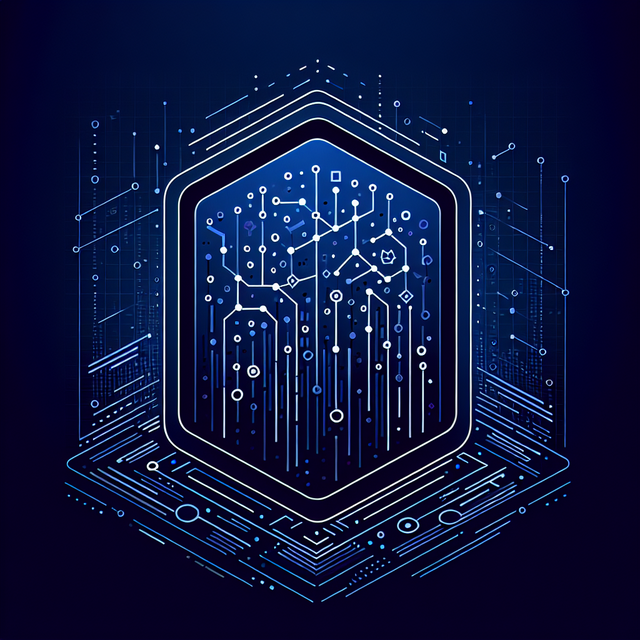
Streamlining QA with AI-Powered Code Analysis
In the fast-paced world of enterprise software development, quality assurance (QA) plays a crucial role in delivering reliable, secure, and efficient applications. As codebases grow more complex and development cycles shorten, traditional QA methods are struggling to keep up. Enter AI-powered code analysis – a game-changing approach that’s revolutionizing how we ensure software quality. Let’s explore how this innovative technology is transforming QA processes and why it’s becoming indispensable for modern development teams.
The Evolution of Quality Assurance in Software Development
Quality assurance has come a long way from manual code reviews and basic testing suites. Today, as software becomes increasingly intricate, QA teams face unprecedented challenges:
- Rapidly expanding codebases
- Pressure to reduce time-to-market
- The need for continuous integration and deployment
- Complex dependencies and integrations
- Heightened security concerns
These factors have pushed the industry to seek more efficient, scalable, and intelligent QA solutions. AI-powered code analysis emerges as a powerful answer to these challenges.
Understanding AI-Powered Code Analysis
AI-powered code analysis leverages machine learning algorithms to scan, understand, and evaluate code at a scale and speed impossible for human reviewers. These tools can:
- Detect bugs and vulnerabilities
- Identify code smells and anti-patterns
- Ensure adherence to coding standards
- Predict potential performance issues
- Suggest optimizations and improvements
By automating these critical aspects of code review, AI-powered analysis tools free up QA teams to focus on more complex, strategic tasks that require human insight.
Steps to Implement AI-Powered Code Analysis in QA Processes
Integrating AI-powered code analysis into your QA workflow can significantly enhance your software development lifecycle. Here’s a step-by-step guide to get you started:
-
Assess Your Current QA Process: Evaluate your existing QA methods and identify areas where AI can provide the most value.
-
Choose the Right Tool: Select an AI-powered code analysis tool that aligns with your tech stack and project requirements. Consider factors like language support, integration capabilities, and customization options.
-
Set Up Integration: Integrate the chosen tool into your development environment and CI/CD pipeline. This often involves configuring plugins for your IDE and build systems.
-
Define Custom Rules: Tailor the tool to your organization’s coding standards and best practices by defining custom rules and checks.
-
Train Your Team: Provide training to developers and QA personnel on how to interpret and act on the AI-generated insights.
-
Implement Gradually: Start with a pilot project or a subset of your codebase to test the tool’s effectiveness and refine your approach.
-
Monitor and Iterate: Regularly review the tool’s performance and adjust settings as needed. Collect feedback from your team to continuously improve the process.
-
Expand Usage: Once you’ve validated the approach, roll out AI-powered code analysis across all relevant projects and teams.
Benefits of AI-Powered Code Analysis in QA
Implementing AI-powered code analysis can yield significant benefits for your QA process and overall software development lifecycle:
- Increased Efficiency: Automate time-consuming code review tasks, allowing QA teams to cover more ground in less time.
- Improved Code Quality: Consistently apply best practices and coding standards across your entire codebase.
- Early Bug Detection: Identify and fix issues earlier in the development cycle, reducing the cost and impact of bugs.
- Enhanced Security: Automatically scan for vulnerabilities and security flaws, bolstering your application’s defenses.
- Continuous Learning: AI models improve over time, adapting to your codebase and development patterns for increasingly accurate insights.
- Objective Feedback: Provide developers with unbiased, data-driven feedback on their code quality and performance.
Overcoming Challenges in AI-Powered Code Analysis Adoption
While the benefits are clear, adopting AI-powered code analysis can present some challenges:
- Initial Setup Complexity: Configuring the tool to work seamlessly with your existing systems may require some effort.
- False Positives: AI tools may sometimes flag issues that aren’t actually problematic, requiring human verification.
- Resistance to Change: Some team members may be hesitant to trust AI-generated insights over traditional methods.
To address these challenges, it’s crucial to approach implementation as a gradual process, provide adequate training, and maintain open communication channels for feedback and refinement.
The Future of QA with AI-Powered Tools
As AI technology continues to advance, we can expect even more sophisticated code analysis capabilities. Future tools may offer:
- Predictive analysis of potential bugs based on historical data
- Automated code generation for test cases
- Natural language processing for improved code documentation
- Real-time collaboration features for remote development teams
Conclusion: Embracing AI for Superior Software Quality
AI-powered code analysis is not just a trend; it’s becoming a necessity for organizations striving to maintain high-quality software in an increasingly complex and fast-paced development landscape. By automating routine QA tasks and providing deep, actionable insights, these tools empower teams to build better software, faster.
As we look to the future of software development, it’s clear that AI will play an increasingly central role in ensuring code quality, security, and performance. Organizations that embrace this technology now will be well-positioned to lead in their respective industries, delivering superior software products with confidence and efficiency.
Ready to revolutionize your QA process with AI-powered code analysis? Explore how AI Code Metrics can help you implement cutting-edge QA practices and drive your software development to new heights of quality and efficiency.